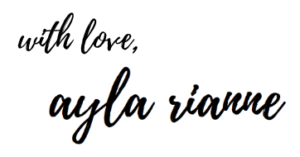This is part 3 of the series: initial set up of a bullet journal. Here we will talk about the the key and the index. We will break down the key and the different signifiers (symbols) used throughout the bullet journal. And I will give you different suggestions of how to set up an index. These two items are a big part of what defines a bullet journal so I thought it was important to go over them in detail to make them easy to understand!
This post may contain affiliate links. Please read my disclosure policy. As an Amazon Associate I earn from qualifying purchases.
Bullet Journal Key

I like to put the key on the inside page of the journal (so the first thing you will see when you open the journal). The key will list all the different signifiers (symbols) you will have in your journal.
Here are the most common bullet journal signifiers:

Most of the bullet journal signifiers are straight forward, but I will quickly go over each of them.
Task: A task is something on your to do list. Examples of a task include: go to the bank, pay your bill, buy a birthday card, clean the bathroom, or call to book an appointment.
Event: An event is something you have to do on a specific date. Examples of an event would be a doctors appointment, a movie date, a brunch date, or a work event.
Note: A note is a thought, observation, fact, or idea. They are almost like short form journal entries.
Completed: Once I have completed a task I will put a little “x” over the bullet point. This could also be done on events but typically I’ll just “x” off tasks. The reason I like the “x” instead of crossing off the whole line is two fold. First, I think it looks much cleaner than crossing off the item. Second, if you ever go back it’s easy to see what you had written down.
Migrated: Migration is considered a very crucial part of bullet journalling. Migration is the act of looking at your tasks and deciding whether to move it to your next to do list. Every week on my weekly I have a to do section filled with items I need to get done. At the end of the week I will see what I completed and what is left. What is left I will migrate to the next week.
The point of migration is to really analyze the items on your to do list and evaluate whether they are important enough to move to your next to do list. As per the originator of the bullet journal, Ryder Carroll, the process of migration helps us become more aware of our actions and helps us create a more productive life [https://bulletjournal.com/pages/learn].
In the original bullet journal there were no weeklies, just monthlies and dailies. For migration with this practice it would involve looking at everything in the monthly log and each daily log to see what tasks are outstanding. At this point you would evaluate whether the task should be migrated to the next month or you could strike out the task.
Once you have decided a task should be migrated, you would put it on the next to do list. I would then draw a “>” over the original bullet point. This has indicated I have migrated a task forward.
Priority: This is exactly what it sounds like. Sometimes your bullet journal will fill up with all the tasks you have to do or you may have a lot of notes written down that day. By putting the priority symbol beside your task, event, or note, it will draw your attention to that specific item.
Bullet Journal Index
Typically the index will be right after the key. It will be the first “collection” in your bullet journal. In some bullet journals, like the Leuchtturm 1917, there will be an index already set up as the first few pages in the bullet journal.
Bullet journals are not typically sequential. When I first set up my bullet journal I will have all of the annual collections at the front and then start with my first set of monthly collections but beyond that it becomes a random assortment! As time goes on I will think of other collections I will want to use like an event planner, a gift tracker, or a workout tracker. To keep track of all the collections from the random ones to the monthly, weekly, and daily spreads, all the page numbers can be tracked in the index.
The index can be as simple or as intricate as you would like it. As always with the bullet journal it is key to set it up in a way that will make you use it. There is no point of setting up a 4 page index with color coding if you are never going to refer back to it!
The simplest index page would just be a running list. Every time you add a page to your bullet journal, you would add it to the next line of the index page. It would look something like this:

An option I use frequently is to have two columns; one for calendar collections (annual spreads, monthly spreads, weekly spreads, and daily spreads) and one for other various collections. This helps keep it organized but isn’t too overwhelming. It would look something like this:

You can also break it out much further than this! Here is an example of an index broken down into four different columns. In my next bullet journal I am going to do a set up more similar to this and have one column specifically for blog thoughts. Then whenever I have a blog idea or anything related to my blog I will jot it down in the blog specific index so I can find it!

In all of my indexes I simply added the title page and the page number. Another option I have seen in bullet journal is to do a keyword section. This is similar to what I mentioned above with my blog. For example a keyword of yours could be a kids name (or in my case my puppies name!). Then anytime you wrote their name down you could add it to the keyword in the index. Then you could reference this anytime you wanted to see a progression of what happened with your keyword!
Well that is it for this week! I didn’t think a key and indexes post would be that exciting. But these two items really are critical to setting up your bullet journal and to begin to lay the foundation for a proper set up.
Next week we will really get into the fun stuff, the meat of the bullet journal! I will be going over what an annual vs monthly vs weekly vs daily spread is. We will also talk about how they feed into each other. And then I will give you some of my favorite examples of what different set ups can look like!

Pin Me!

Bullet Journal for Beginner’s Series
Part 1: The Who/What/When/Where/Why. A bullet journal introduction .
Part 2: Bullet journal materials… What do you need? .
Part 3: Initial set up of a bullet journal (you are here!)
Part 4: Annual vs Monthly vs Weekly vs Daily Spreads .



Leave a Reply